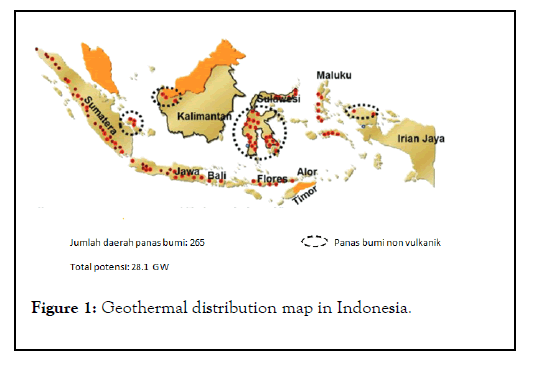Journal of Tourism & Hospitality
Open Access
ISSN: 2167-0269
ISSN: 2167-0269
Commentary - (2022)Volume 11, Issue 1
Indonesia is located in the ring of fire in the world because it is surrounded by a row of active volcanoes from west to east. West Java was chosen as the research location because it has many volcanoes compared to other areas in Indonesia, where hot springs are used for bathing tourism areas. Based on this problem, we are interested in conducting research in accordance with the duties and functions of our research center, environmental radiation safety.
Sampling was carried out in several hot springs such as in Ciater, Subang (Tangkuban Perahu Mountain), Ciwidey and Pengalengan, Bandung (Patuha Mountain), Cipanas, Garut (Guntur Mountain) and Darajat, Garut (Kamojang Mountain). The data notes that some of these hot spring tourist areas are the most popular because they are visited annually by 1.3 million tourists. The latest data notes that Cipanas and Darajat hot springs are visited by 50,000 tourists per year.
Some literature states that hot water originating from volcanoes contains a certain amount of radon and radon is a radioactive noble gas, odorless and derived from the decay of radium (226Ra) that occurs naturally in the earth's crust. According to the United Nations Scientific Committee on the Effects of Atomic Radiation (UNSCEAR), half of the world average value of the annual effective dose by natural radiation sources is attributed to radon (222Rn) and thoron (220Rn) and their derivatives. As a carcinogenic gas, radon (222Rn) has been recognized as the second major health risk factor after lung cancer. Water-sourced radon contributes to the total inhalation risk associated with radon in indoor air.
In addition, drinking water contains dissolved radon and the radiation emitted by radon and its radioactive decay products exposes sensitive cells in the stomach and other organs after being absorbed into the bloodstream. Noting this danger, the EPA (United States Environmental Protection Agency) has also proposed a Maximum Contaminant Level (MCL) for radon in water, which is 11 Bq L-1. Radon dissolves in water that passes through soil and rock containing naturally radioactive substances, this is as a result of the movement of water deeper through the earth's crust.
Based on this, we conducted a study whose samples were obtained from hot springs in several districts in West Java, because this area has the most bathing areas. Among them are taken from the Ciater Hot Springs area, Subang; Ciwidey and Pangalengan Hot Springs in Bandung; and Cipanas and Darajat Hot Springs in Garut.
Our results obtained that the concentration of radon (222Rn) in samples of natural hot springs in the West Java region of Indonesia ranged from 1 to 31 Bq L-1.
Based on this value, an estimated annual effective dose in the natural hot springs area has been calculated and has been obtained ranging from 0.51 to 0.71 mSv with an average of 0.60 mSv for workers in the Area. Meanwhile, tourists declared as public were exposed in the range of 0.10 to 0.14 mSv with an average of 0.12 mSv.
This value is within the range of the average committed effective dose of inhalation and terrestrial radiation for the general population, 1.7 mSv per year. It can be said that so far it is still safe for tourists in Indonesia to visit hot springs, especially in West Java, Bandung.
Indonesia has many geothermal sources, some of which are used for the hot spring tourism sector, while mainly geothermal for the energy sector or power generation.
Most tourists in the world and in Indonesia really like hot springs, and further research will be carried out in other locations, even though this sampled location is among the largest in Indonesia and is known to be dense with tourists.
Furthermore, for the next research project, we will also focus on exposure to radon gas in several tourist caves, because Indonesia is also developing cave tourism (Figure 1).

Figure 1: Geothermal distribution map in Indonesia.
Citation: Mellawati J (2022) Commentary on Radon Activity Concentrations in Natural Hot Spring Water: Dose Assessment and Health Perspective. J Tourism Hospit. 11:485.
Received: 12-Jan-2022, Manuscript No. JTH-22-15455; Editor assigned: 17-Jan-2022, Pre QC No. JTH-22-15455(PQ); Reviewed: 26-Jan-2022, QC No. JTH-22-15455; Revised: 02-Feb-2022, Manuscript No. JTH-22-15455(R); Published: 09-Feb-2022 , DOI: 10.35248/2167-0269.22.11.485
Copyright: © 2022 Mellawati J. This is an open-access article distributed under the terms of the Creative Commons Attribution License, which permits unrestricted use, distribution, and reproduction in any medium, provided the original author and source are credited.